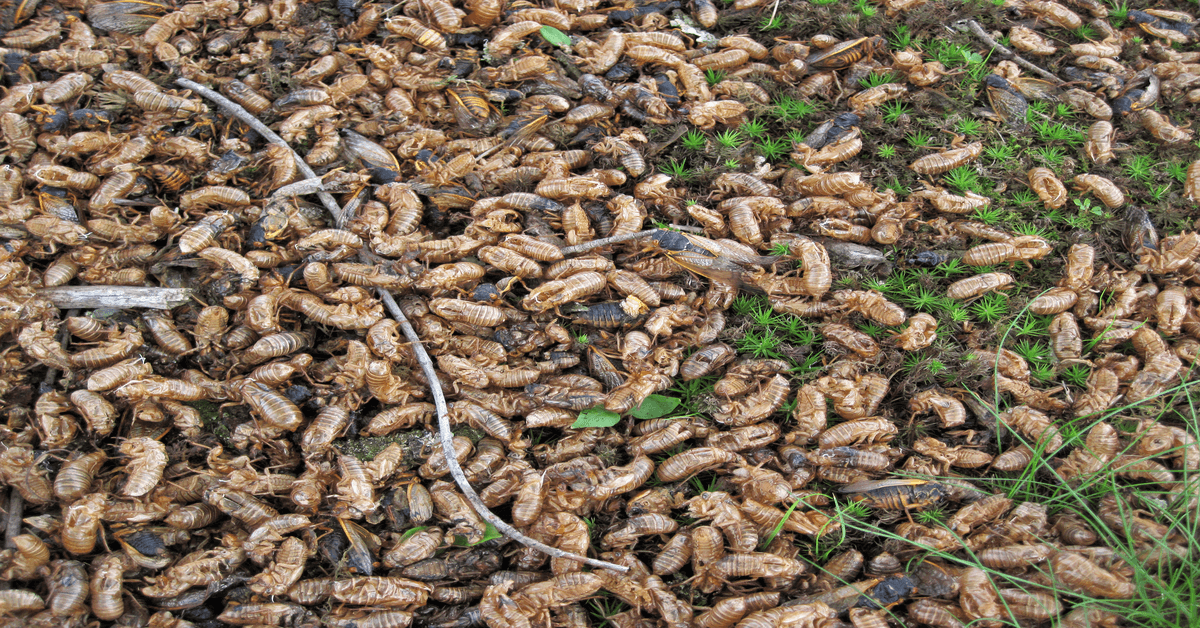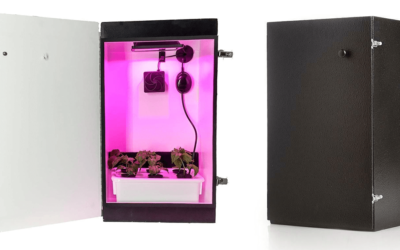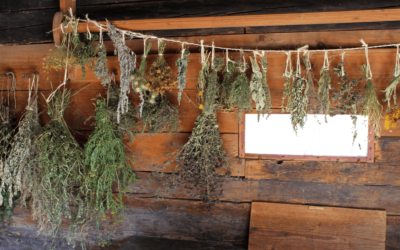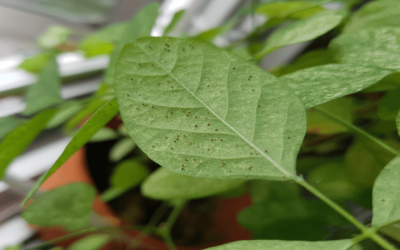Eastern America is under a lot of pressure this season, where more than a billion cicadas will shortly arrive in a major emergency since 2004. The bugs are part of a population called Brood X, also recognized as Great Eastern Brood, projected from Kentucky to Manhattan. These insects have been underground for 17 years, and they have been tunneling and feeding themselves for the last decade.
Now, as they get out from these tunnels, mating will be one of their priorities. Therefore, you should know that the drone cicadas produce a noisy pairing song. This song is produced by male insects that use a drum-like organ called a tymbal. If you are tired of crickets, you will be frustrated and mad at cicadas once they come out. However, you can easily get rid of cicadas with the right methods.
What Are the Best Ways to Get Rid of Brood X Cicadas?
Cicada outbreaks can sometimes occur in the warm months and can be a noisy concern. You may have cicadas each year (which appear annually), periodically (this occurs in large quantities every 13 or 17 years), or proto-periodically (which occurs annually but often in significant numbers for a long time). Cicadas are commonly one-inch or larger bugs that fly. They feature clear wings and are recognized for their music. They make one of the loudest noises, and each group has its special music.
Cicadas are emerging after 17 years underground. Here are the best ways to get rid Brood X Cicadas infestation around your home during the hot months of 2021.
1.Using Insecticides
If cicadas are too noisy and nuisance, several items can help. In dust, focus, or prepared to spritz tubes, Sevin Insect Killer comes to your help. You may attach a garden spray to a pad, and you can easily handle the exterior of the yard. The formulations of dust and pumping spraying must be added to your plants specifically.
You can also use Reclaim IT for your trees and bushes to destroy and deter these insects. Remember, live cicadas aren’t the only challenge. Adults begin dying after going out to breed. That lands you in the backyard with thousands of decaying insects. You can dump them, roast them, or move them to your fertilizer bucket.
It is essential to begin care after you have verified Cicada interaction. Take some time to read all ingredients lists first, obey the mark installation directions, and be secure with necessary safety appliances. We will suggest the application of Reclaim IT as an exterior remedy for adornment and plants in your courtyard and as a protection remedy, both for killing and repelling cicadas.
Reclaim IT is a large-scale pesticide that is marked for over 70 various species, namely Cicadas. It has a prolonged protective impact, keeping pests under check up to 90 days following implementation. To estimate however much Reclaim IT, you will need to cover the whole field, measure the square footage of your backyard. Reclaim IT is processed by 0.25 to 0.5 ounces in 1000 sq. feet for a gallon of water.
After blending, you can start applying three feet from the base of the frame and three feet out from the base. Then treat the joints of the vent, doors, roofs, siding, fractures and gaps, and HVAC openings when spraying in this way.
You ought to treat the entire field with the exception of orchards and vegetables. Begin at the rear of your property, and sprinkle your entire landscape to the front. Sprinkle decorations and little shrubbery, too. Also, it would be best if you did not allow individuals or animals to visit treated areas for two to four hours.
2.Protect Your Yards and Susceptible Areas
Male insects do no harm to the leaves, so your landscapes are healthy, and cicadas have no mouthpieces for eating. However, females hack into smaller trees and put their nests underneath leaves. This organic planting would not be a challenge for large trees to thrive, but trees less than 4 feet high will be killed by the impact.
Smaller trees are recommended to be handled in advance by specialists. It’s probably going to thrive if you can’t access the branches of the tree. And make sure that all ponds are covered or cleaned regularly, as dead insects block the drain.
Often cicadas associate the sounds of power instruments with the movements of males. As a consequence, if you use electrical systems, grass cutters, garden tools, or tractors, males and females may flock to you. Professionals suggest using power tooling in daylight or in the dusk where the cicadas are less present to avoid swarming.
3.Use Barricades
Landscaping shops, big box stores, and countryside stores offer a special fence to protect fragile or small trees. This barrier protects your gardens not only from cicadas but also from certain landscape pesticides. Various kinds of nettings, some with wider openings and others with more close weavings, are usable. All rely on which kind of pesticides you try to prevent.
4.Manually Eliminate Them
This is potentially our most unwanted choice, but also a possibility. Picking insects from your favorite plants and trees is an appropriate way of ensuring that they are eliminated from your garden. This might be slightly disgusting, but it would make all the difference with a couple of farming accessories.
5.Call Professionals
Alternatively, you can also call in professionals and ask for exterminators to help with these insects. Professionals can easily handle everything, identify the cicada species, and offer appropriate methods for dealing with the infestation.
How Can You identify Cicadas?
Before starting to deal with cicadas, you have to understand what they look like and what species you are dealing with at the time. Identification is among the most important things before starting the treatment. If you don’t understand what these insects look like, it will be harder for you to find the right chemicals and pesticides for them. Here are the most common traits that you will find among these insects.
- These insects are known to be quite large and can easily grow up to three inches during their adult life. This is why it will be harder for you to miss them in your backyard. This is applicable for all kinds of cicadas, such as periodical cicadas and Brood X cicadas.
- These insects have large transparent wings that can extend up to four or even five inches in span.
- Cicadas are known to make unique sounds that will be annoying for you. Moreover, they make these sounds for the purpose of mating, and these get louder during the night.
- These insects come in different body colors, and you will find them in metallic black or reddish-brown, depending upon the species.
- In most species, the eyes are round and usually bright black red. However, the color and size of the eyes also change according to the species, and it will help you determine what kind of pesticide you should use in your backyard.
How Can You Carry Out Inspection for Cicadas?
After the confirmation of cicada on your land, you can move forward with the investigation process and conduct a thorough inspection of your land. During the inspection process, your main goal will be to find the infestation areas around trees and shrubs. Once you have discovered the specific shrubs or trees, you can better understand the activity and the intensity of infestation.
The majority of infestations are bound to occur outdoors. This is why you should start by searching for these insects around your trees or ornamentals in your backyard or front lawn. Most of the time, these insects are found around giant trees or shrubs.
However, most of the species are found around undisturbed areas with a little bit of moisture surrounding the roots. These insects feed on the roots, and you will have to take a closer look around the bottom of the trees to find their infestation.
Another place to look for is the low-hanging branches of the trees. These insects are known for perching on their trees and swing around the bark to attract other insects towards the tree. Ultimately, you can follow the sound and figure out their infestation place.
How Can You Prevent Cicada Infestation?
Getting rid of cicadas is not the only thing that matters. Preventing any future infestations is also of utmost importance. It was hard enough to get these insects off your property in the first place. You wouldn’t like it if they resurfaced in your front lawn or backyard after a while.
This is why you need to make sure that you protect your property throughout the year for different seasons. Otherwise, the insects will come back again and begin swarming in your backyard to annoy you. Here are some important steps and preventative measures that you can take:
Reapply the pesticides at least 30 days before these insects are supposed to emerge from their hiding places. You should cover all the expected infestation areas. Moreover, you should apply pesticides during late summer or early spring to ensure that your property doesn’t become infested by these insects.
Another important element is to keep your trees and shrubs well-trimmed and clean. Cicadas like to hide around the bushes and around the roots of shrubs. When you keep them well trimmed, they will not have enough place to lay their eggs or start an infestation process in your backyard.
If you want to protect yourself against Brood X Cicadas, you should refrain from planting trees at least two years in advance before this species is expected to surface. One of the reasons behind this is that this species likes to prey on younger trees and lay eggs around their roots. Another reason is that they will ultimately kill these trees, and your investment will go to waste.
If you still want to plant trees in your backyard, you should use a fine mesh meeting to prevent any infestation or any other issues.
What Is the Bottom Line Here?
Cicadas are large flying insects that can make a home in your backyard or the front lawn and cause an annoying infestation around your trees and shrubs. These insects are more commonly found during hot months.
One of the most annoying things about these insects is their loud mating sounds. One of the best ways to protect yourself against Brood X cicadas is to apply pesticides to your backyard continuously. Moreover, you can call professionals or use fine mesh netting around your younger trees and shrubs during the hot seasons.
If all else fails, you can cut down your trees or go for pruning every other week to ensure that these insects cannot lay their eggs around the roots, and you do not have to face an annoying infestation. We have listed the best ways to get rid of Brood X cicadas. You can research on your own and choose the best method based on the specific intensity and activity of the infestation.










